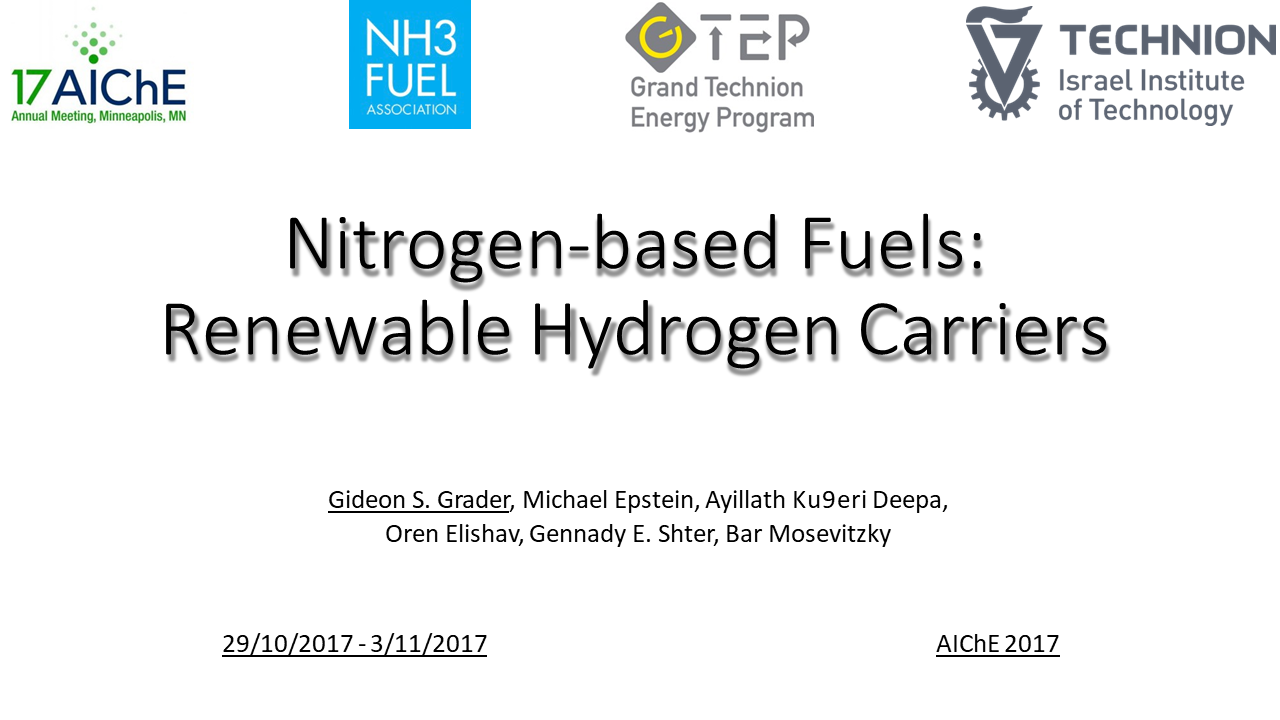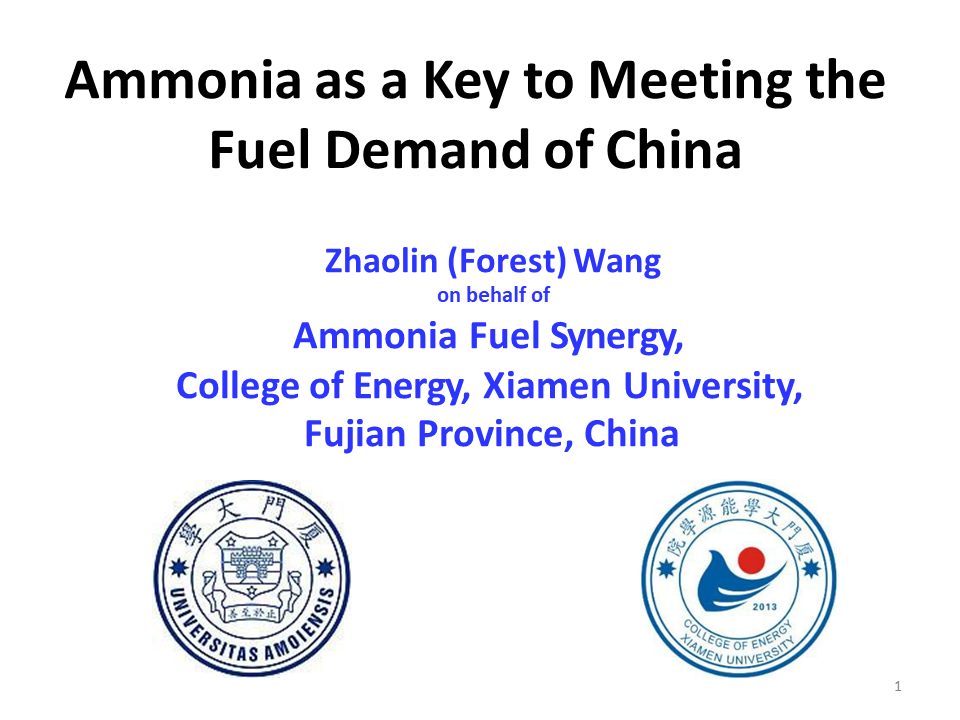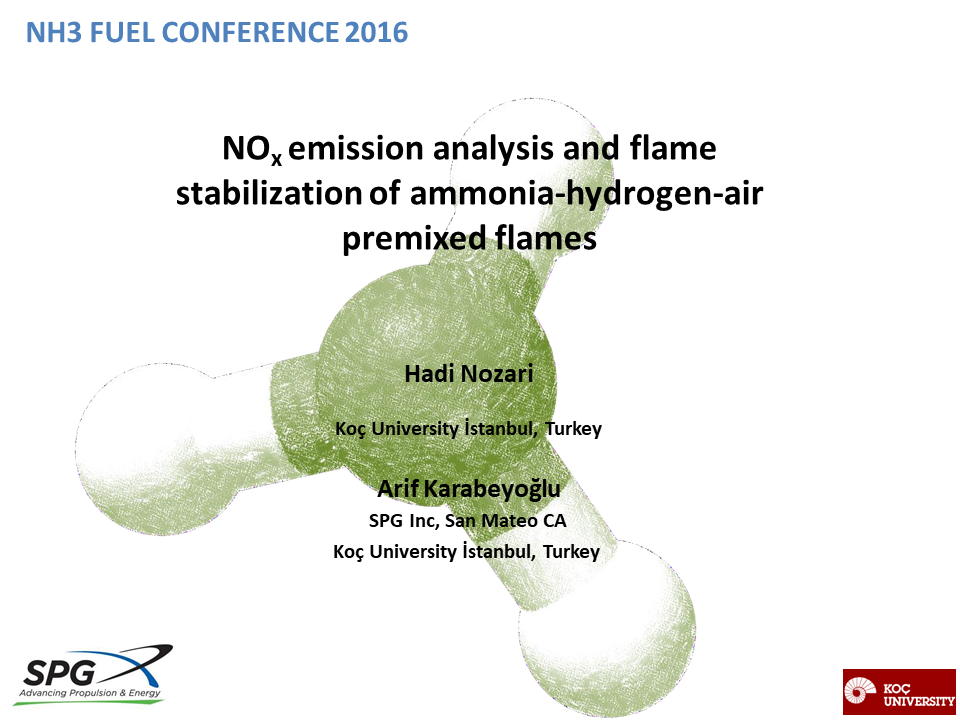Presentation
Efficient and Clean Combustion of Ammonia-Hydrogen-Air Mixtures
Based on its well-known merits ammonia has been gaining special attention as a potential renewable energy carrier which can be replaced in power generation systems. Considering its low flame speed and its potential for producing fuel NOx as the main challenges of combusting ammonia, flame stability, combustion efficiency, and NOx formation are experimentally investigated. Focus is on premixed ammonia-hydrogen-air flames with high mixture fractions of ammonia (60-90% by volume) under standard temperature and pressure conditions. We introduce silicon-carbide (SiC) porous block as a practical and effective medium for ammonia-hydrogen-air flame stabilization which enables stable and efficient combustion of the mixtures…







